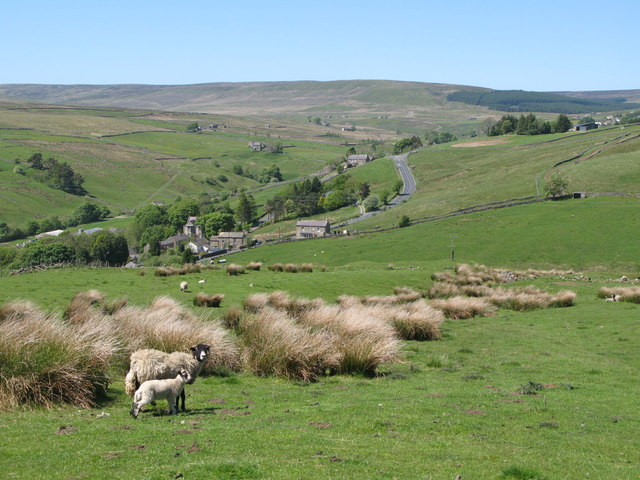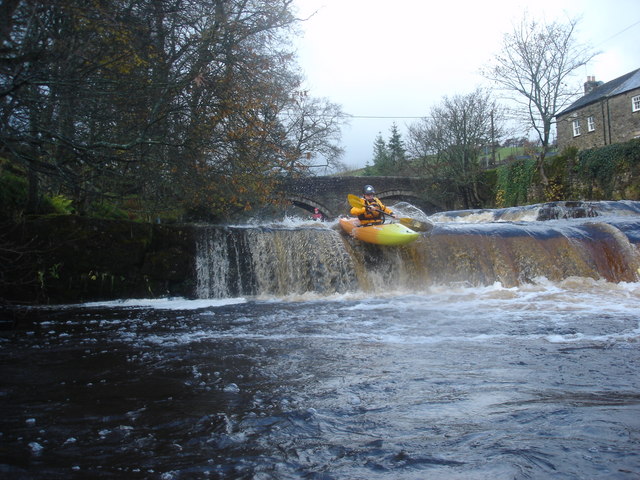Whimsey Cleugh
Valley in Durham
England
Whimsey Cleugh

Whimsey Cleugh, Durham (Valley), is a picturesque village located in the northeast of England. Nestled in the Durham Dales, this charming hamlet is renowned for its tranquil and idyllic setting. The village is situated in a valley, surrounded by rolling hills, lush green meadows, and meandering streams, creating a postcard-perfect landscape.
Whimsey Cleugh is a small community with a population of around 300 residents. The village boasts a rich history that dates back centuries, evident in its well-preserved architecture and historic landmarks. The centerpiece of the village is the Whimsey Cleugh Manor, a stunning 17th-century manor house that stands as a testament to the village's past.
The village is a haven for nature lovers and outdoor enthusiasts. The surrounding countryside offers ample opportunities for hiking, cycling, and birdwatching. The nearby Cleugh Woods, a designated nature reserve, is a haven for wildlife and features a network of walking trails that showcase the area's natural beauty.
In terms of amenities, Whimsey Cleugh has a small but thriving community. The village is home to a local pub, The Cleugh Inn, where villagers and visitors alike can enjoy a pint of traditional ale and savor hearty, homemade meals. Additionally, a village shop provides essential groceries and everyday necessities.
Whimsey Cleugh is also known for its warm and welcoming community spirit. Regular events and gatherings, such as the annual summer fair and Christmas market, bring villagers together and foster a strong sense of camaraderie.
In conclusion, Whimsey Cleugh, Durham (Valley), is a charming and picturesque village set amidst stunning natural surroundings. With its rich history, abundant outdoor activities, and close-knit community, it offers a peaceful and fulfilling lifestyle for its residents.
If you have any feedback on the listing, please let us know in the comments section below.
Whimsey Cleugh Images
Images are sourced within 2km of 54.781056/-2.1655668 or Grid Reference NY8942. Thanks to Geograph Open Source API. All images are credited.










Whimsey Cleugh is located at Grid Ref: NY8942 (Lat: 54.781056, Lng: -2.1655668)
Unitary Authority: County Durham
Police Authority: Durham
What 3 Words
///tiny.ribcage.pining. Near Stanhope, Co. Durham
Nearby Locations
Related Wikis
Lintzgarth
Lintzgarth is a village in the civil parish of Stanhope, in County Durham, England. It is situated to the west of Rookhope. The Lintzgarth smeltmill was...
Slit Woods
Slitt Woods is a Site of Special Scientific Interest in the Wear Valley district of County Durham, England. It occupies the valley of Middlehope Burn,...
West Rigg Open Cutting
West Rigg Open Cutting is a Site of Special Scientific Interest in the Wear Valley district of west County Durham, England. It is a disused ironstone...
East Blackdene
East Blackdene is a hamlet in the civil parish of Stanhope, in County Durham, England. It is situated to the north of the River Wear, on the opposite side...
Cowshill
Cowshill is a village in the civil parish of Stanhope, in County Durham, England. It is situated at the top of Weardale, between Lanehead and Wearhead...
Copthill
Copthill is a village in the civil parish of Stanhope, in County Durham, England. It is situated on the north side of Weardale, between Cowshill and Cornriggs...
Allenheads
Allenheads is a former mining village in the Pennines to the north of Weardale in Northumberland, England. Lead extraction was the settlement's industry...
West Blackdene
West Blackdene is a village in the civil parish of Stanhope, in County Durham, England. It is situated to the north of the River Wear, opposite Ireshopeburn...
Have you been to Whimsey Cleugh?
Leave your review of Whimsey Cleugh below (or comments, questions and feedback).















